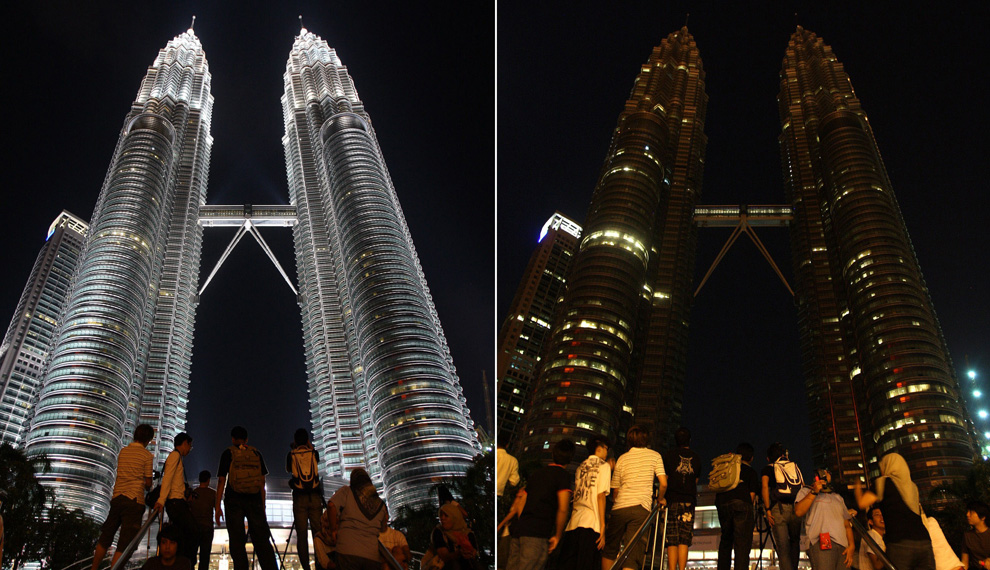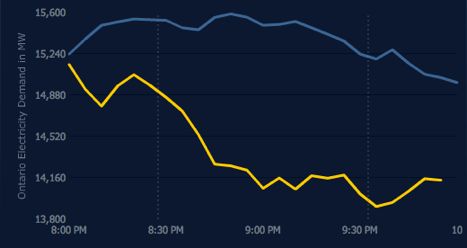As the Earth Hour enters into its 8th year of celebration today – ever since its first observation on March 26, 2007, in Sydney, Australia – the event has attained a phenomenal global scale. From 371 cities in 35 countries that participated in Earth Hour 2008, the movement now spreads across 7000+ cities across 150+ countries.
Participation from public, government bodies, development agencies and corporate has been encouraging. Many iconic monuments the world over have joined this campaign by switching off their lights during the Earth Hour.

This not only symbolizes human endeavor to bring about a change in mindset towards energy consumption, but also paves the way for adoption of innovative environment-friendly technologies.

Most participating cities have reported a perceptible drop in energy consumption during the earth hour – a claim which has been acrimoniously debated as having no credit as power stations keep on running and do not reduce demand for an hour. But power generators work on schedules and have started taking note of the drop in demand during Earth Hour.

Source: Independent Electricity System Operator (IESO)
The rapid success of this event comes around as a contrast to the beleaguered climate change negotiations going on for years armed with a fractured mandate and achieving limited success accompanied by great deal of frustration to many nations declared as vulnerable to climate change impacts. The Earth Hour stands apart from many global environmental movements, which can show us the way ahead in resolving some of the urgent environmental issues.
First, unlike most environmental campaigns that in their enthusiasm to bring quick changes create panic and resort to street protests and play the shaming act, the Earth Hour, according to Andy Ridley of WWF who initially conceptualized the campaign, converts ‘street protests’ to ‘street parties’ to bring about lasting change. The Earth Hour takes a positive approach, i.e., it does not chastise those who do not participate.
Second, it empowers the individual to act on his or her own by taking very small steps. The social engagement created during the run-up to the event subtly nudges people to appreciate the initiative and participate. According to images released by NASA, the impact of this seemingly small task of switching off lights for an hour has a far-reaching effect that is captured by distant satellites.
Third, it has remained apolitical so far, i.e., it does not own allegiance to any particular political or social class, which helps it to transgress otherwise impermeable boundaries.
Fourth, it is all-inclusive, which means that anybody can observe Earth Hour in any manner as it is open to multiple interpretations, which is acceptable so long as it meets the end objective – to create awareness to save our planet.
Finally, it has gained relevance across diverse communities, i.e., Earth Hour has evolved into a universal meaning that communicates a simple message to save our planet, which is relevant to all communities, irrespective of culture.
All these aspects have fueled the success of the Earth Hour campaign, which shows light beyond the sixty minutes of darkness. Energy conservation is one of the major ways to reduce carbon emissions, which is the prime cause of global warming. The zone of influence has been expanding ever since with focus being sharpened on efforts beyond the sixty minutes. Many new allied activities have been associated with Earth Hour that help not only in building awareness on climate change but also help forge a way ahead.
The objective of this one-hour event is to bring about awareness on climate change and pressing environmental issues, but it also has the potential to generate awareness needed to bring about behavioural modifications – a much needed change to achieve the much larger goals of sustainable development.
ThinktoSustain.com has been an ardent supporter of this global initiative and we hope that it will help us in stretching beyond the sixty minutes of the Earth Hour.
 The author is currently Editor at ThinktoSustain.com – a market space for ideas…
The author is currently Editor at ThinktoSustain.com – a market space for ideas…
© 2014 ThinktoSustain.com. All Rights Reserved.


















